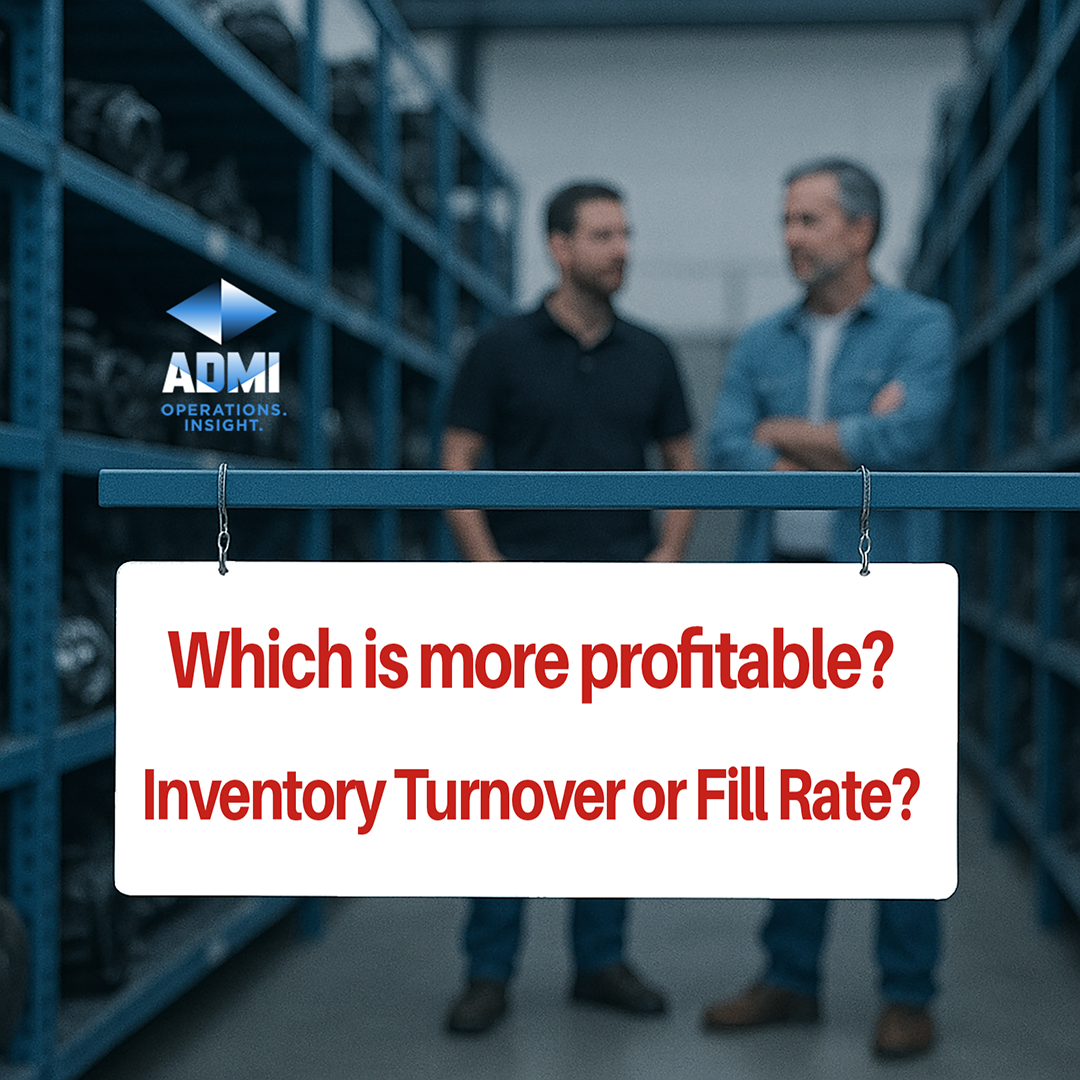A dealership’s parts department plays a crucial role in keeping the service department and wholesale customers’ businesses running smoothly. However, striking the right balance between inventory turnover and off-shelf fill rate is essential for profitability.
Some managers focus heavily on the cash invested in parts, aiming for a higher turnover rate to free up capital. However, pushing for too many turns often results in lower off-shelf fill rates, leading to stockouts and delaying repairs. On the other hand, prioritizing a high off-shelf fill rate without proper turnover control can result in excess inventory and speculative purchases, hurting profitability.
Every dealership has a sweet spot
And finding it is key!
At a certain point, increasing fill rate while reducing turnover becomes more profitable for the dealership as a whole. Want proof? Do the math:
- What is the value of an extra annual turn? (Average Parts Investment ✖ Average Gross Profit % ✖ Turn Rate)
- How much is a repair order worth on average?
- How many repair orders are opened per day, and how many more could be completed by expanding parts stocking breadth?
And don’t forget the indirect benefits:
✅ Happier customers
✅ Fewer loaner vehicles needed
✅ Satisfied technicians
✅ Less strain on the parts department
High Inventory Turnover vs. High Off-Shelf Fill Rate
High Inventory Turnover ensures fast-moving parts cycle through efficiently, reducing excess inventory and freeing up capital. But if turnover is too high, frequent stockouts can lead to repair delays, frustrated customers, and lost revenue.
High Off-Shelf Fill Rate guarantees the service department has immediate access to parts, ensuring faster repairs and higher customer satisfaction. However, an unmanaged high fill rate often leads to obsolete stock, tied-up capital, and increased storage costs.
The Solution: Finding Balance
The best strategy for a parts manager is to optimize turnover while maintaining a healthy fill rate. This can be achieved through:
✔ Expanding Breadth Wisely using historical data-driven forecasting
✔ Reducing Depth and Excess Investments based on actual demands and order to delivery timing
✔ Optimizing both RIM & DMS Ordering Parameters
Just like a technician needs the right tools for the job, a parts department needs the right strategy to stay profitable.
ADMI360: The Right Tools for the Right Balance
ADMI360 provides the insights and guidance parts managers need to fine-tune inventory levels, maximize off-shelf fill rates, and ensure profitability.
Find out more about ADMI360 at www.admiglobal.com/admi-360 today!
For more information, contact us today or sign up to receive a free copy of our brochure.
By Jay Graham

 Insight Blog
Insight Blog Contact Us | 734.994.4604
Contact Us | 734.994.4604 Search
Search A.I. PLATFORM
A.I. PLATFORM